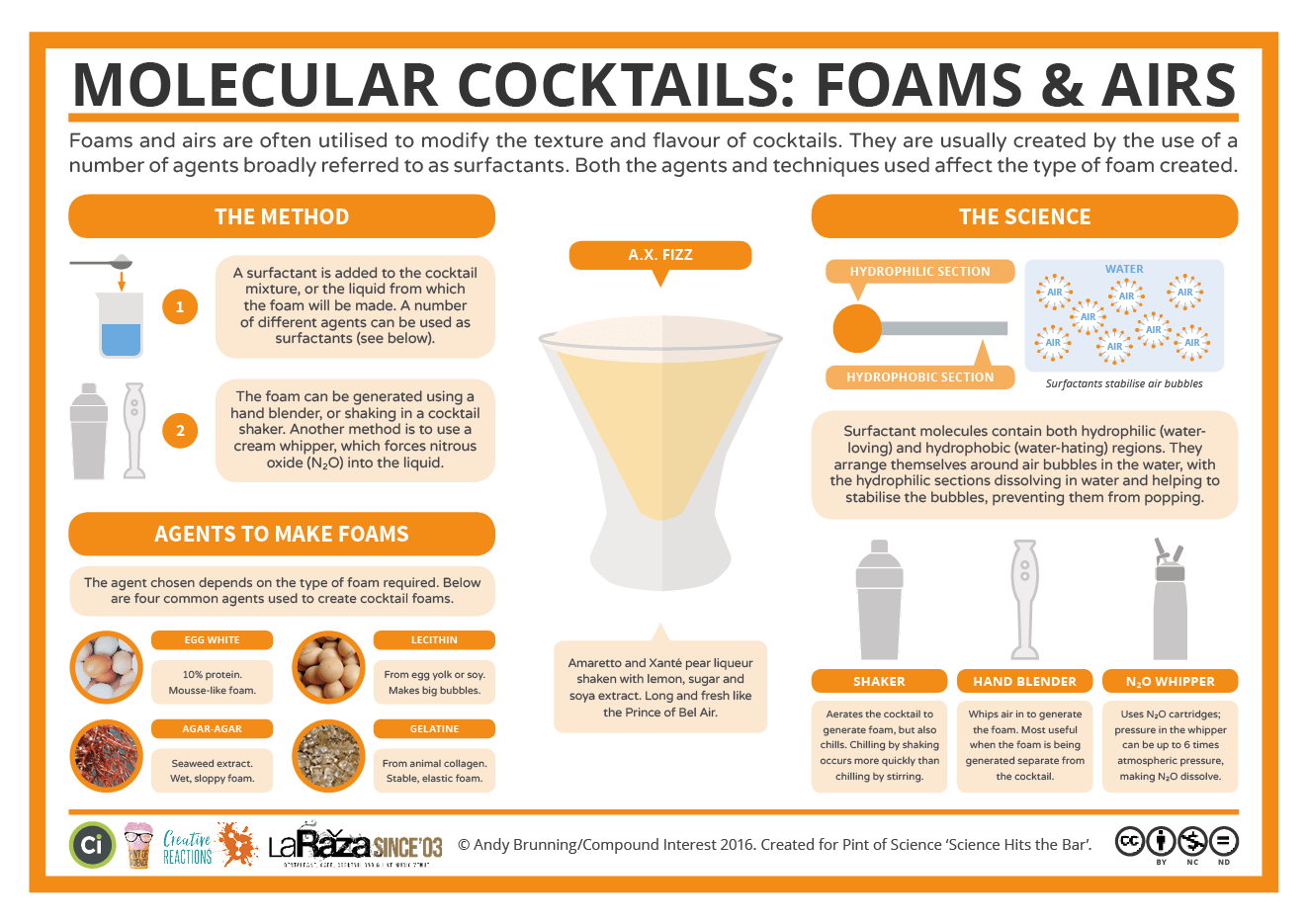Shaken or Stirred: The Science Behind Cocktail Mixing
In the 1953 film, Casino Royale, James Bond famously asked for his martini to be shaken – not stirred. But what difference does shaking or stirring actually make in his favorite cocktail? The answer is – wait for it – science!
According to this cocktail experiment by Gizmodo, shaking rather than stirring reduces the proof by almost half. This is because ice turns to cold water while being shaken (shoutout to thermodynamics), resulting in a diluted drink that’s deliciously cold, but nearly half as strong as its stirred counterpart. This peculiar choice for the suave secret agent led fans to theorize that the reason why he prefers a slightly watered down martini is because he wants to keep his wits sharp, while also appearing intoxicated (how many martinis do you see him drink per movie?) to his observers. This way, he can act quickly against his opponents and take them by surprise if needed.
Classic spy movies aside, there’s a lot of chemistry involved in making your favorite cocktail from the moment the spirits and ice are poured into the shaker. Take the textures and mouthfeel of mixed drinks, for example. Cocktail foams (like the ones on whiskey sours) are made by adding a surfactant into the mixture. A surfactant, in this context, is the liquid from which the foam is made once aerated. Surfactants, which can come in the form of egg whites or gelatin, for instance, stabilize air bubbles in the mixture, preventing them from popping. Below is an infographic about the molecular aspect of cocktails featuring methods and agents for foam-making.
Source: compoundchem.com
If you’re like some of us at Tech Square ATL (TSQATL) Social Club who prefer bitters to pre-made mixers, let’s take a look at these alcohol-infused botanical ingredients through the lens of molecular chemistry. Each type of bitter has a unique chemical compound that informs their individual flavor profiles. For example, the flavonoid naringin, commonly found at a high concentration in grapefruits, is responsible for the bitter taste in citrus fruits. Below is an infographic that shows you a few chemical compounds that lend particular bitters their distinct tastes.
Source: compoundchem.com
But the question still remains: Is it better to stir specific cocktails rather than shaking them? While there are many variables like palates and personal preferences, most bartenders go by the following rule, according to Gizmodo: “Cocktails that have juice, dairy, or egg whites should be shaken,” because shaking creates a frothy effect from aeration. On the other hand, “Cocktails that only use spirits – such as martinis and Manhattans – should be stirred,” for strength and clarity of all the flavor profiles combined.
Is all this talk about the chemistry of cocktails tugging at your curiosity about the science behind the tastes and textures of mixed drinks? Join us next week for Mind Of A Maker, a signature TSQATL Social Club event that comes in the form of either a demonstration, workshop, or creative activity with community members.
During the Mind of A Maker: Chemistry of Cocktails edition at Technology Enterprise Park (TEP), our friends at Bar Racho will demonstrate how the chemical compounds of fresh ingredients impact the flavor profiles of your adult beverage. Stop by to learn something new; stick around for the complimentary cocktails! RSVP is required, so be sure to save your spot now.
DID YOU KNOW?
Lime juice is often more acidic than lemon juice. On the pH scale, lemon juice generally registers between 2.00 and 2.60, while lime juice registers between 2.00 and 2.35.
What is your favorite cocktail? Better yet, have you experimented with shaking versus stirring your favorite drink? Let us know in the comments below.



